A critical step in API development is creating proper documentation for consumers to refer to. This article will therefore introduce a simple and sleek API tool used for describing and documenting web APIs.
If you want an API tool that has an intuitive and easy-to-learn user interface, you should consider using Apidog, a comprehensive API development platform that facilitates processes for users to build, test, mock, and document APIs all within a single application.
If this sounds interesting to you, start with Apidog today by clicking on the button below. 👇 👇 👇

This article will introduce a powerful tool used for describing and documenting web APIs with a design-first approach, called API Blueprint.
What is API Blueprint?


URL: https://apiblueprint.org/
Quoted from their website, API Blueprint is a powerful high-level API description language for web APIs, allowing anybody within a team to be involved in the API lifecycle.
API Blueprint Key Features
There are a few things that API Blueprint excels in, mainly for these characteristics:
Communication and Collaboration
- Clear and Concise: The straightforward syntax fosters communication and understanding between developers, designers, and API consumers.
- Shared Knowledge Base: API Blueprints act as a shared knowledge base, ensuring everyone is on the same page regarding the API's functionality.
Design-first Approach
- Data Modeling First: API Blueprints encourage defining data structures upfront, leading to well-designed and consistent data models.
- Improved Design Decisions: By explicitly outlining the API structure, API Blueprints promote better design choices and avoid potential issues later in development.
Focus on Documentation
- Human-Readable: Written in Markdown syntax, API Blueprints are easy for developers and non-technical stakeholders to understand.
- Comprehensive: They capture all aspects of the API, including resources, actions, data structures, and examples.
- Single Source of Truth: API Blueprints provide a centralized location for API documentation, reducing redundancy and improving consistency.
Additional Features
- Tooling Ecosystem: Various tools like Apiary and Aglio support API Blueprint development, offering functionalities like visualization and documentation generation.
- Testing Foundation: API Blueprints serve as a foundation for API testing by outlining expected behaviors and responses.
- Flexibility: While primarily focused on RESTful APIs, API Blueprints can be adapted to other API styles as well.
How to Use API Blueprint?
Firstly, you will need to have a plain-text editor ready, and if available, switch syntax-highlighting to Markdown or directly to API Blueprint if supported.
If in case you still do not have a plain-text editor and are still searching for one, you can check out their recommended list of editors, and make sure to devote your time to familiarizing yourself with the chosen editor!

Next, you will have to learn the basic syntax of API Blueprint. As API Blueprint leverages Markdown for its structure and readability, and with MSON for defining data structures, you will have to refer to the official API Blueprint website for more tutorials and references.


Is API Blueprint Free?
Yes, as API Blueprint is an open-source tool that you can find on GitHub, anyone can start using API Blueprint without paying a single penny!
Do I Need to Install Any Other Apps?
Aside from a plain-text editor, you may want to consider installing other tools that work well together with API Blueprint. To see the full list of compatible tools with API Blueprint, check out their recommended list of tools.

API Blueprint Code Samples
Here are some code samples that you can refer to in case you are unsure of what to do. Remember that these code samples may not 100% work on your code editor, so make sure to apply the proper modifications to ensure that it fits right in with your API.
Sample 1 - Simple Resource with GET Action:
# My Simple API
This API provides access to a list of users.
## Users
A collection of user objects.
### GET /users
Retrieves a list of all users.
Returns:
* Status: 200 OK
* Content-Type: application/jsonThe code sample above defines a simple API with a single resource named Users, which allows a GET request to /users to retrieve a list of all users. The response section specifies a success status code 200 OK and the content type (JSON) for the response body.
Sample 2 - Resource with Multiple Actions:
## Products
A collection of product objects.
### GET /products
Retrieves a list of all products.
Returns:
* Status: 200 OK
* Content-Type: application/json
### GET /products/{id}
Retrieves a specific product by its ID.
Path Parameters:
* id (string) - The unique identifier of the product.
Returns:
* Status: 200 OK
* Content-Type: application/json This code example expands on the concept of resources by showing how to define multiple actions (GET) for a single resource Products. One action retrieves all products, while the other retrieves a specific product based on its ID defined as a path parameter.
Sample 3 - Data Structures with MSON:
## Users
A collection of user objects.
**User**
{
"id": "string",
"name": "string",
"email": "string"
}
### GET /users
Retrieves a list of all users.
Returns:
* Status: 200 OK
* Content-Type: application/json
Response:
```json
[
{
"id": "user-1",
"name": "John Doe",
"email": "[email address removed]"
},
{
"id": "user-2",
"name": "Jane Smith",
"email": "[email address removed]"
}
]The code example above demonstrates defining a data structure named User using MSON syntax. It specifies the properties and their data types within the user object.
The response section also includes an example JSON payload adhering to the defined data structure.
Apidog - All-in-one API Development Tool
Aside from API Blueprint, there is another API development tool that is equipped for the entire API lifecycle - Apidog. Apidog is an API platform that has its own intuitive and simplistic user interface, designed for new users to quickly adapt to the new working environment.


With Apidog, you can build, mock, test, and document APIs all within the platform. To see how Apidog operates, take a look at the sections below!
Building Your New API With Apidog
With Apidog, you can create APIs by yourself. It might even save you time - without having to endlessly search the Internet to find "the one true" answer, you can just create it by yourself.
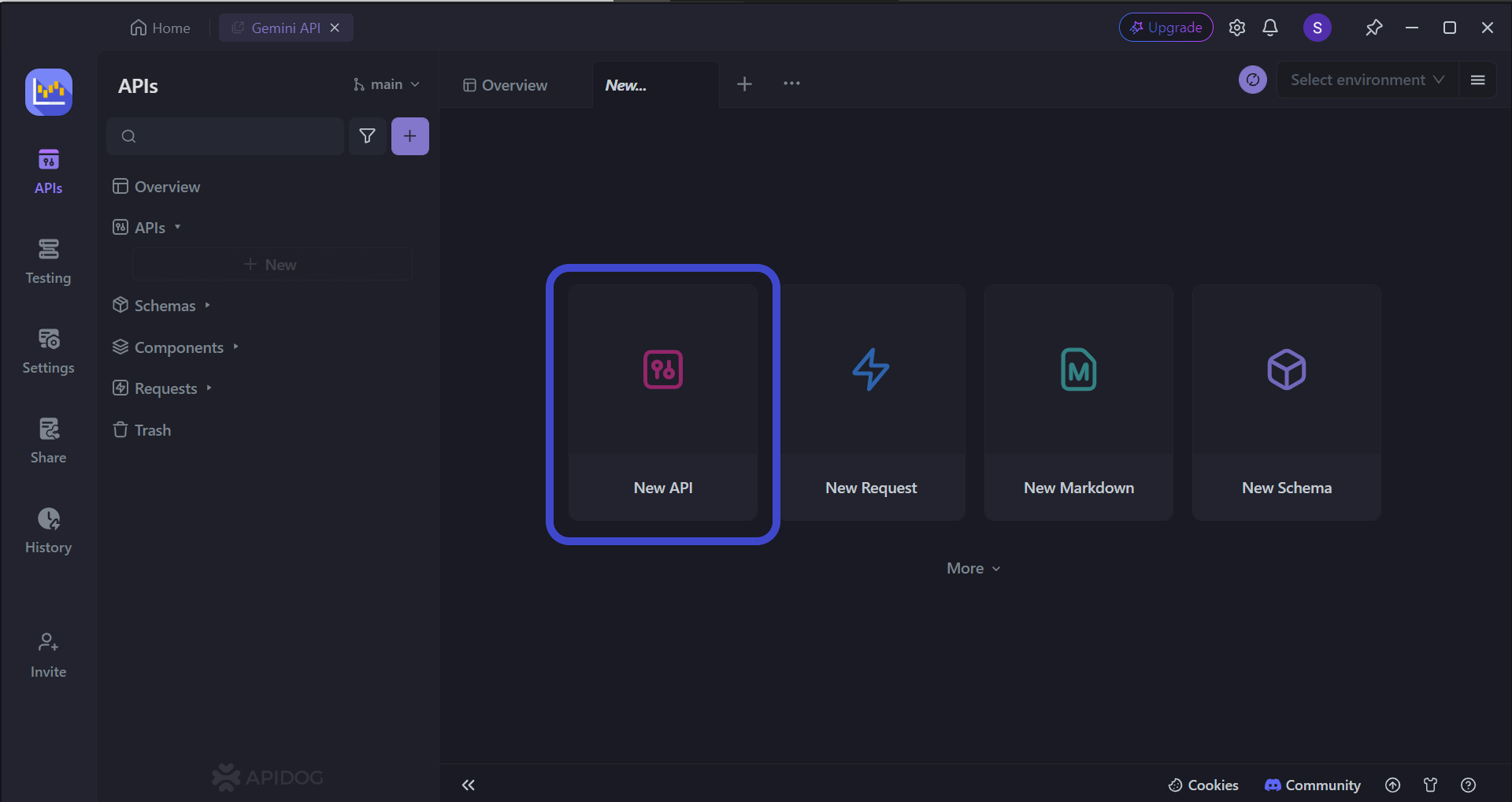
Begin by pressing the New API button, as shown in the image above.

Next, you can select many of the API's characteristics. On this page, you can:
- Set the HTTP method (GET, POST, PUT, or DELETE)
- Set the API URL (or API endpoint) for client-server interaction
- Include one/multiple parameters to be passed in the API URL
- Provide a description of what functionality the API aims to provide.
To provide some assistance in creating APIs in case this is your first time creating one, you may consider reading these articles to understand the best practices for making REST APIs (or APIs in general):

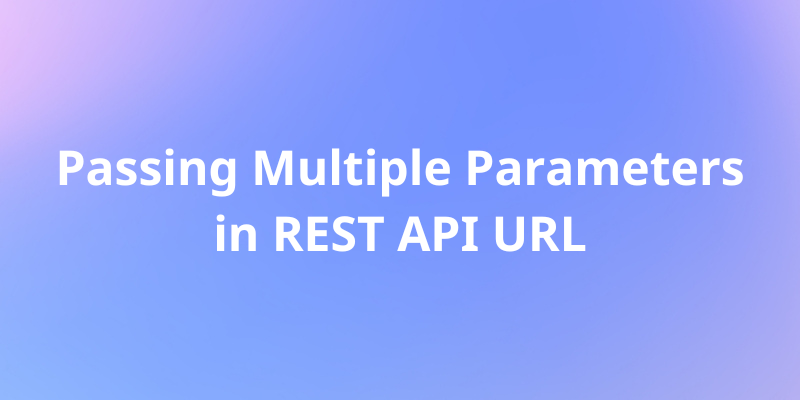
Generate Descriptive API Endpoint Documentation with Apidog
Similarly, with API Blueprint, Apidog can generate beautiful, descriptive API documentation based on what you have designed and included during your API development stage.
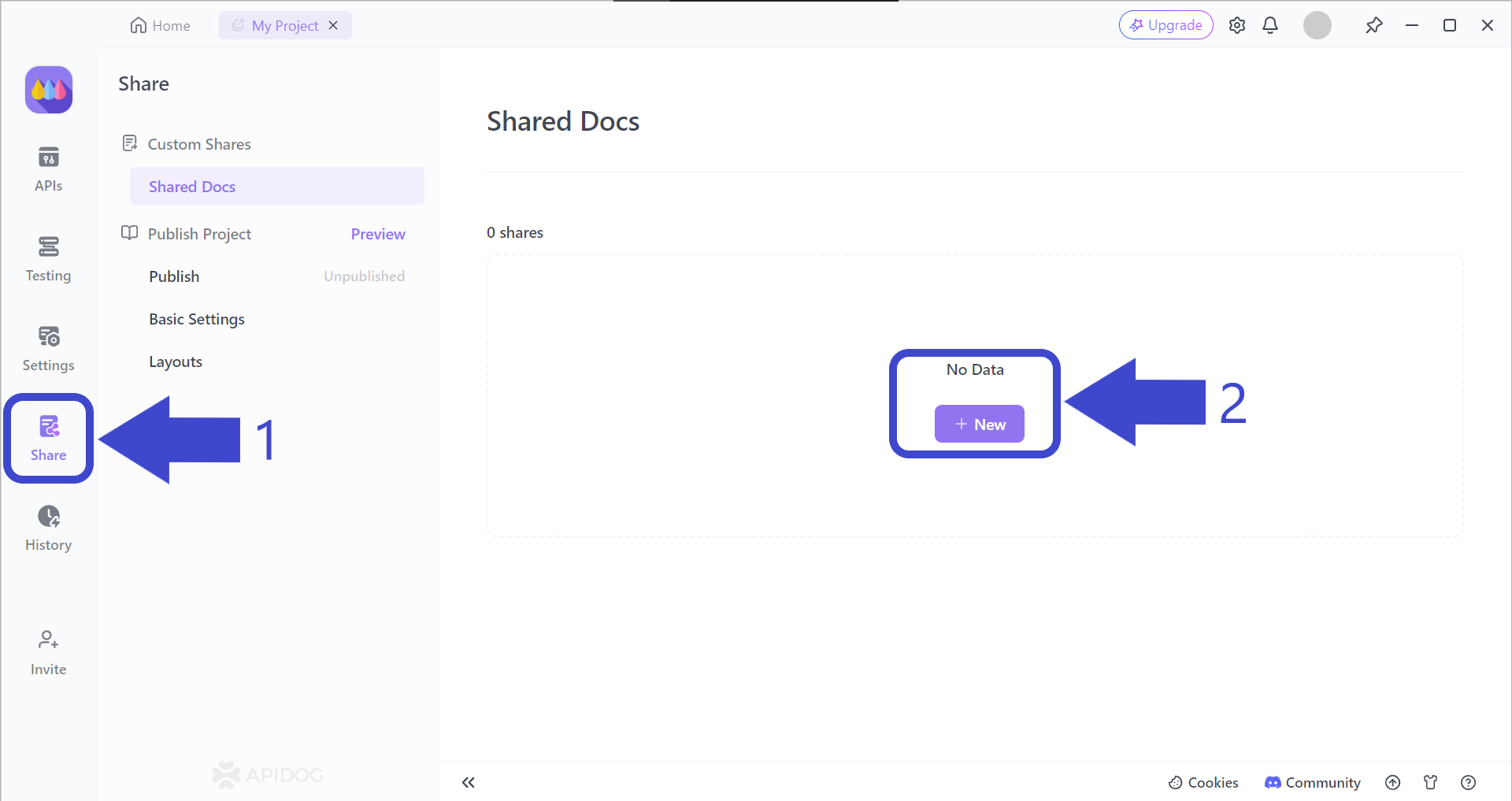
Arrow 1 - First, press the Share button on the left side of the Apidog app window. You should then be able to see the "Shared Docs" page, which should be empty.
Arrow 2 - Press the + New button under No Data to begin creating your very first Apidog API documentation.
Select and Include Important API Documentation Properties
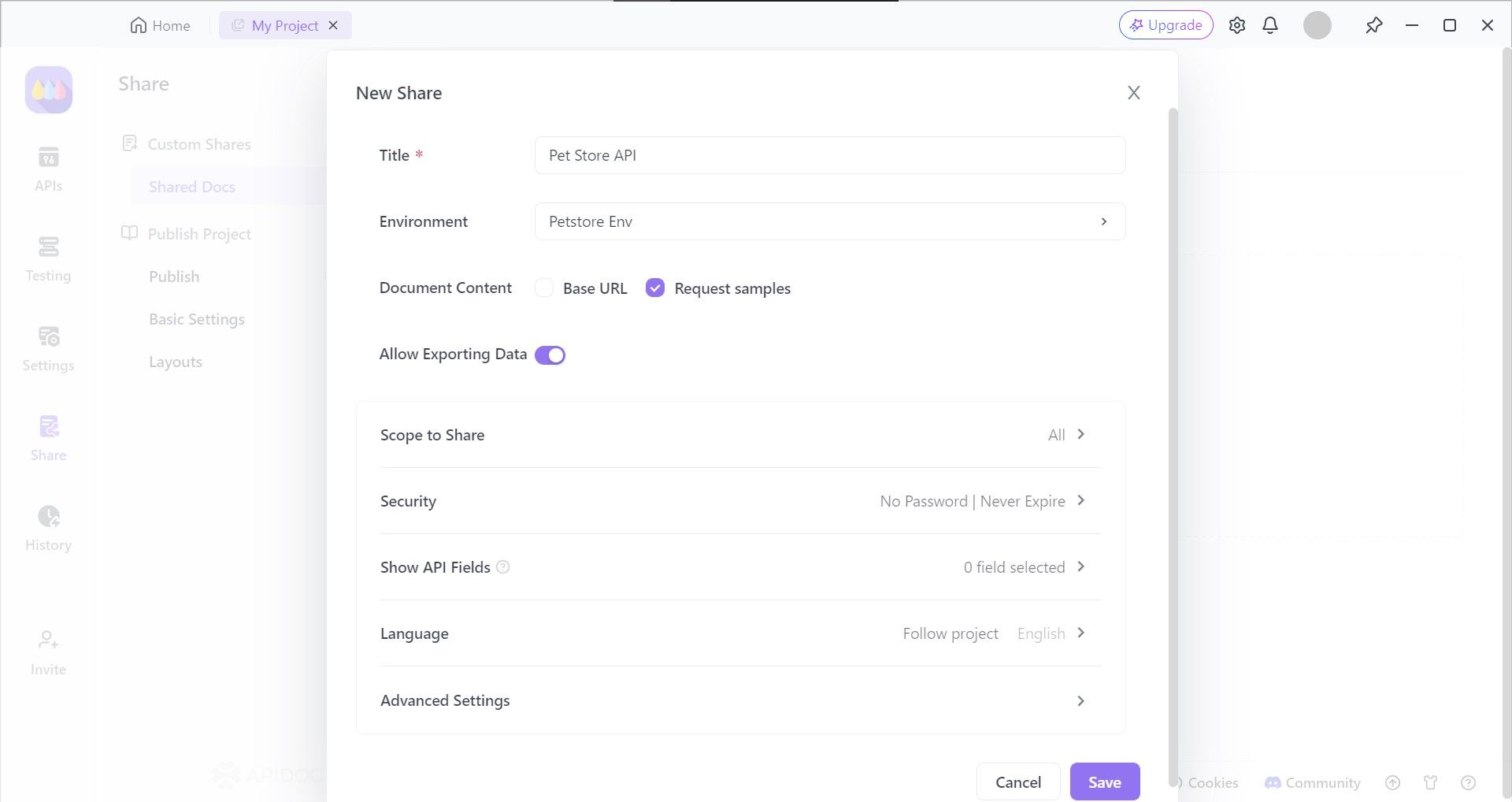
Apidog provides developers with the option of choosing the API documentation characteristics, such as who can view your API documentation and setting a file password, so only chosen individuals or organizations can view it.
View or Share Your API Documentation
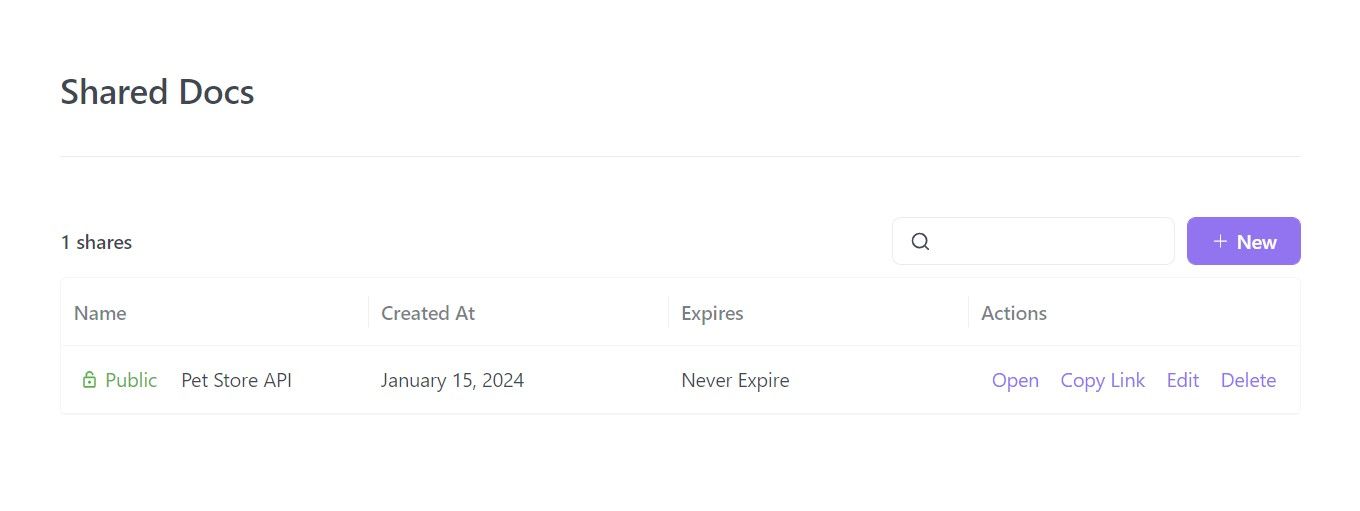
You can now distribute your API endpoint to anyone you want, or post the URL on your API's website to allow potential consumers to see how your API works.
If more details are required, read this article on how to generate API documentation using Apidog:

Conclusion
API Blueprint emerges as a valuable tool for anyone involved in the web API ecosystem. Promoting a design-first approach and fostering clear communication among developers, designers, and consumers, ensures well-structured and well-documented APIs.
API Blueprints act as a single source of truth, capturing all aspects of the API from functionalities and data models to examples and comments. This not only simplifies API development but also streamlines collaboration and knowledge sharing across teams.
If API Blueprint is too complicated for you and you want to opt for a simpler, more straightforward choice, consider downloading Apidog. Apidog is a wonderful option if you wish to develop APIs from scratch or create modifications on existing APIs. You can also test APIs on Apidog, making it a very convenient choice for API developers.





